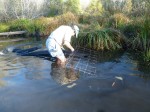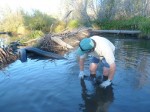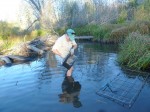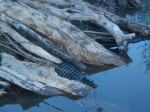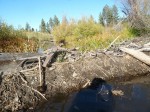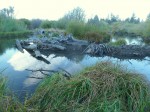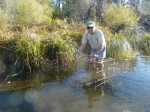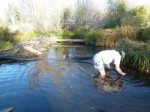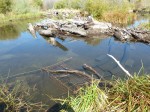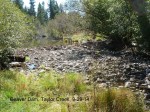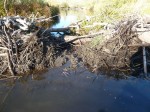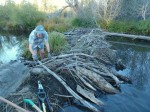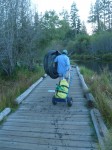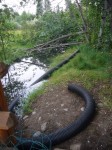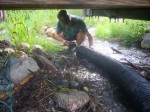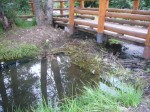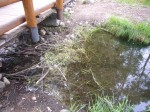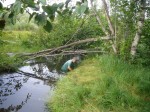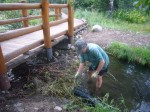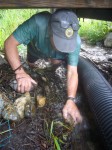 Great news from Taylor creek in Tahoe which has been the site of the most glacial-paced evolution in beaver management. I can’t tell you how many folks have been hard at work advocating the use of flow devices, but Sherry and Ted have been at the forefront every step of the way. They finally got the go-ahead to install a leveler in the side channel a while back, and since that was so successful they were recently given the go ahead on the main channel. I’ll let Sherry tell you about it herself.
Great news from Taylor creek in Tahoe which has been the site of the most glacial-paced evolution in beaver management. I can’t tell you how many folks have been hard at work advocating the use of flow devices, but Sherry and Ted have been at the forefront every step of the way. They finally got the go-ahead to install a leveler in the side channel a while back, and since that was so successful they were recently given the go ahead on the main channel. I’ll let Sherry tell you about it herself.
The US Forest Service, pleased with the success of the Leveler installed by SWC as a “research project” on a small beaver dam on a man-made side channel at Taylor Creek, has asked SWC to also install Levelers on the main channel! The first Leveler kept water from saturating a meadow and running onto a trail that crossed the meadow. They requested that we install a Leveler on a beaver dam and pond some distance downstream from their Stream Profile Display, again in order to avoid any flooding on trails (and beaches where visitors watch the Kokanee Salmon spawning). Fish & Wildlife will be increasing flows in Taylor Creek this week, in order to let Kokanee salmon begin their fall spawning. The new Leveler on the main creek successfully kept the lower beaver dam at a level the Forest Service likes when flows were increased for one day last week. We look forward to installing another Leveler on the main creek channel at the beaver dam that is near the FS Display, to prevent any flooding of the trails and display, and, more importantly to prevent the Forest Service from tearing out this beaver dam, as they did last winter and years past. That was SWC’s major goal (and it only took 2+ years).
Also the FS is actually asking F&G to do as little ‘notching’ of beaver dams as possible, and to wait and see if fish can actually cross the beaver dams on their own – we’ll see if that really happens. (Plenty of fish managed to cross the beaver dams last fall during the government shutdown, when nobody could be taking out dams.)
Too much information, I’m sure, but thanks so much for all your posts. The last 2 photos were taken yesterday, 9-29 (Leveler installed Wed. the 24th) – the Leveler at noon, in the full sun you can see everything. (This is off the trails, where most people won’t see it at all.) And the main beaver dam upstream – you can see how low the water is now (and would be naturally – they’re raising it tomorrow for the fish).
And again, a huge thank you for your donation, all of which we’ll be using for this!!
Congratulations Sherry and Ted on a monumental job well done! As always, it turns out that fixing the problem is fairly straightforward, it’s changing those minds that’s hard, hard work! You did outstanding on both accounts, and the beavers thank you!



